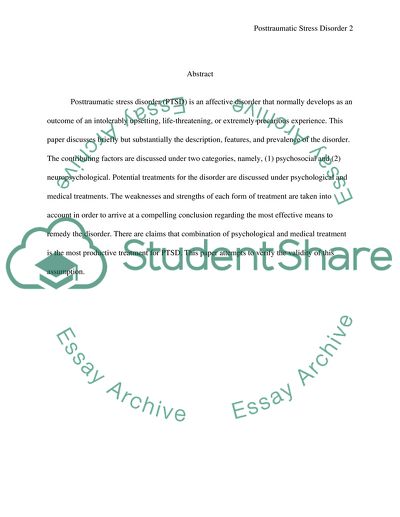Cite this document
(Psychological Treatments and Posttraumatic Stress Disorder Research Paper, n.d.)
Psychological Treatments and Posttraumatic Stress Disorder Research Paper. Retrieved from https://studentshare.org/health-sciences-medicine/1736235-literature-review-post-traumatic-stress-disorder-write-a-review-focusing-on-the-psychological-treatments-for-ptsd-how-effective-are-they
Psychological Treatments and Posttraumatic Stress Disorder Research Paper. Retrieved from https://studentshare.org/health-sciences-medicine/1736235-literature-review-post-traumatic-stress-disorder-write-a-review-focusing-on-the-psychological-treatments-for-ptsd-how-effective-are-they
(Psychological Treatments and Posttraumatic Stress Disorder Research Paper)
Psychological Treatments and Posttraumatic Stress Disorder Research Paper. https://studentshare.org/health-sciences-medicine/1736235-literature-review-post-traumatic-stress-disorder-write-a-review-focusing-on-the-psychological-treatments-for-ptsd-how-effective-are-they.
Psychological Treatments and Posttraumatic Stress Disorder Research Paper. https://studentshare.org/health-sciences-medicine/1736235-literature-review-post-traumatic-stress-disorder-write-a-review-focusing-on-the-psychological-treatments-for-ptsd-how-effective-are-they.
“Psychological Treatments and Posttraumatic Stress Disorder Research Paper”, n.d. https://studentshare.org/health-sciences-medicine/1736235-literature-review-post-traumatic-stress-disorder-write-a-review-focusing-on-the-psychological-treatments-for-ptsd-how-effective-are-they.


